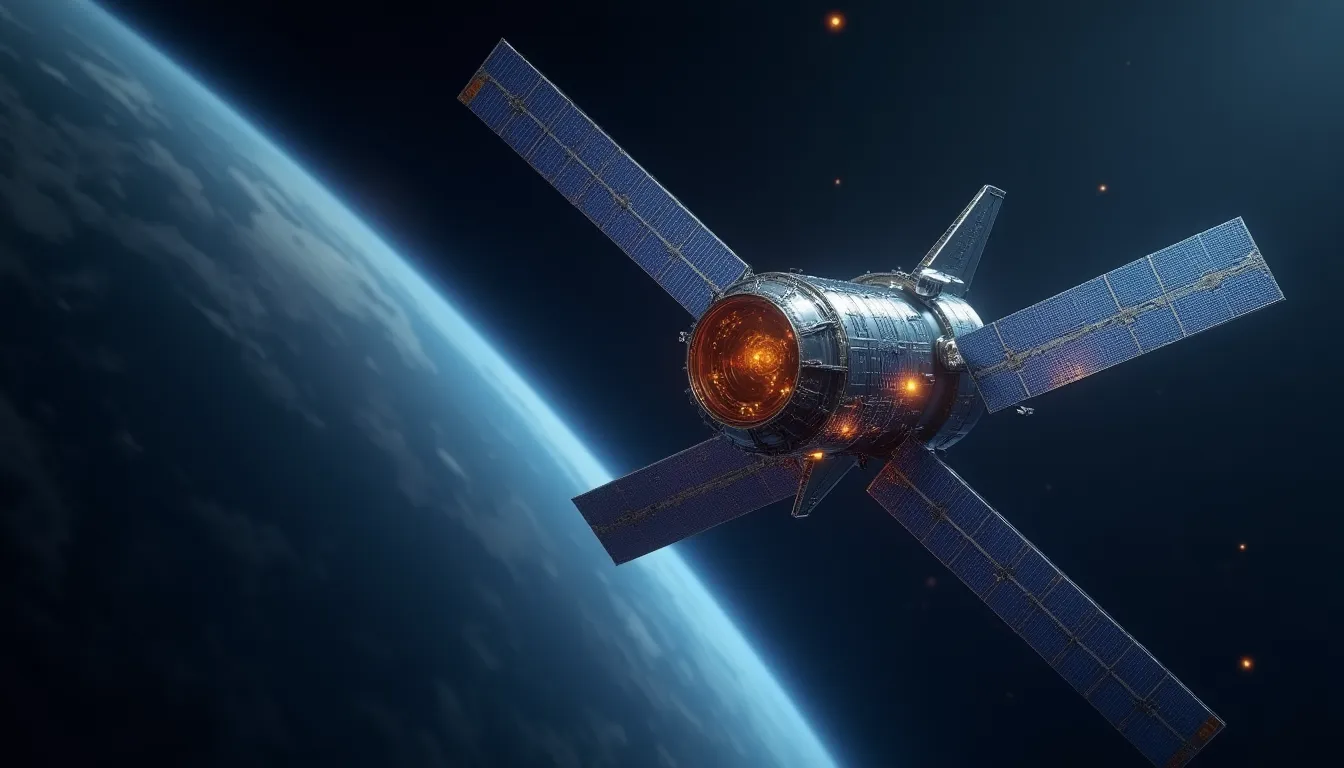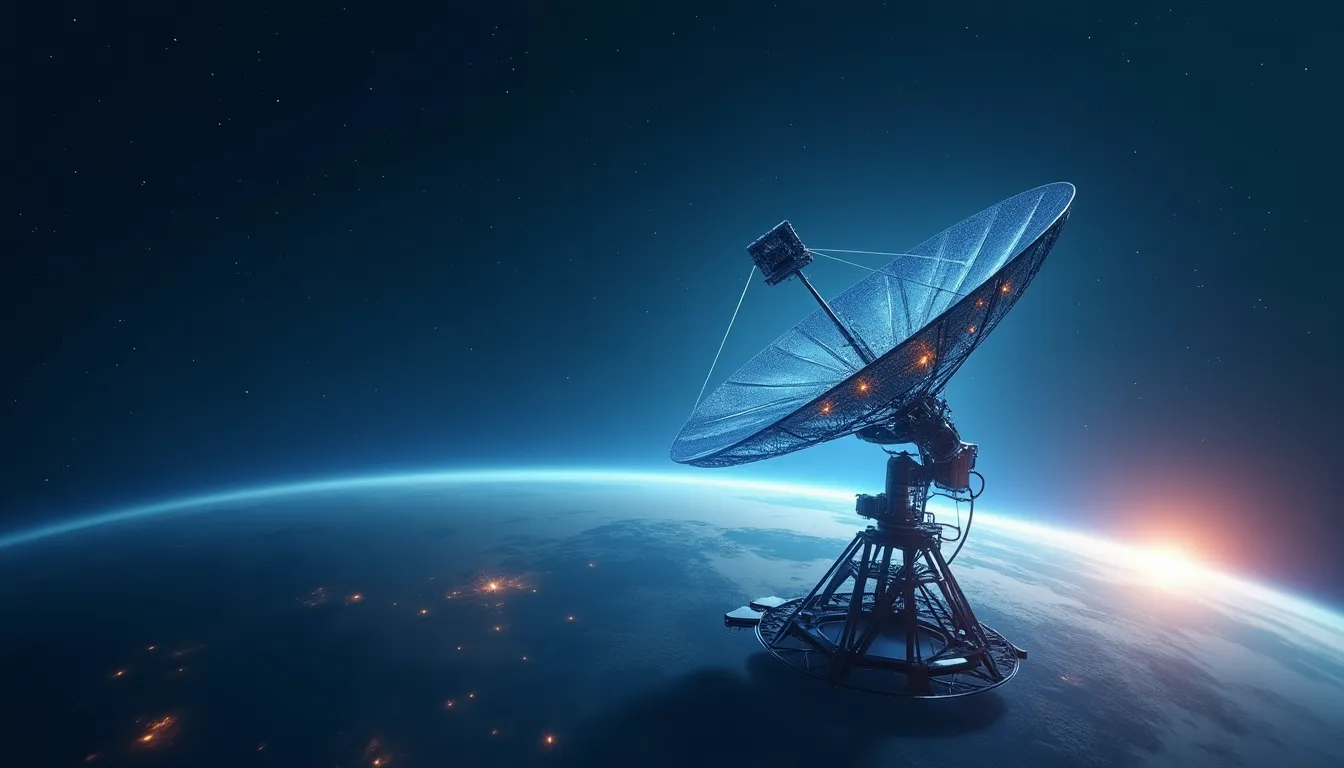Recent developments in the satellite sector have transformed the landscape of aerospace, defense, and technology. As we approach the end of October 2025, significant activity, including major spectrum deals, satellite launches, regulatory reforms, and technological innovations, is reshaping the industry. This article delves into these advancements, highlighting their implications for various sectors.
Market Disruption and Industry Deals
One of the most notable developments is the recent $17 billion spectrum deal between SpaceX and EchoStar. This agreement is set to disrupt the traditional satellite market, compelling established players like Iridium Communications to reevaluate their strategic positioning. The deal not only accelerates the deployment of mega-constellations but also enhances flexible spectrum sharing, which is crucial for new service models in maritime, aviation, and remote connectivity.
Meanwhile, Globalstar, a key collaborator with Apple, is reportedly considering a $10 billion sale, indicating a potential wave of consolidation within the satellite industry. This trend reflects an industry-wide shift toward optimizing resources and capabilities in response to increased competition and evolving market demands.
Satellite Launches and Deployments
The satellite launch calendar is bustling with pivotal missions. Notably, the ViaSat-3 F2, a high-capacity Ka-band geostationary satellite, has recently arrived in Florida in anticipation of its late October launch on a ULA Atlas V rocket. Weighing over six tons, ViaSat-3 F2 is expected to more than double ViaSat’s bandwidth capacity, delivering over 1 terabit-per-second (Tbps) across the Americas. This enhancement is critical for advancing commercial mobility and defense communication systems, offering unprecedented data throughput and connectivity.
On October 23, SpaceX’s Falcon 9 successfully launched the SpainSat NG II satellite into geosynchronous transfer orbit. This satellite serves as a replacement for the original SpainSat NG I, significantly bolstering secure military communications for Spain. Its successful deployment underscores the importance of reliable satellite communications in modern defense strategies.
Additionally, the Copernicus Sentinel-1D radar Earth observation satellite is slated for launch on November 4, 2025, from Europe’s Spaceport in French Guiana aboard an Ariane 6 rocket. Sentinel-1D will provide high-resolution, all-weather radar imaging essential for land and ocean monitoring, facilitating emergency management and maritime surveillance. Equipped with Galileo-enabled receivers and an Automatic Identification System (AIS) payload, it promises to enhance maritime domain awareness and positioning accuracy.
Regulatory and Strategic Initiatives
In a strategic move to maintain its competitive edge, the U.S. Federal Communications Commission (FCC) has proclaimed October 2025 as “Space Month.” This initiative aims to accelerate satellite regulatory reforms, focusing on licensing and spectrum rules to adapt to the rapidly changing market landscape, particularly in light of competition from countries like China. By streamlining satellite operations, the FCC hopes to foster innovation and growth within the burgeoning space economy.
Technological Innovations and Research
Technological advancements continue to play a pivotal role in the evolution of satellite capabilities. In a noteworthy initiative, Lockheed Martin’s In-space Upgrade Satellite System (LINUSS) is actively engaging undergraduate students to deploy and test machine learning applications for satellite data compression and processing. This project addresses critical challenges such as limited onboard memory and the need for efficient data transmission, thereby enhancing satellite software functionalities.
Moreover, recent efforts by China to launch a satellite aimed at testing new communication technologies highlight the ongoing global race to enhance satellite communication capabilities. While specific technical details remain scarce, the implications of these advancements will likely influence global communication networks.
In the defense sector, Neuraspace has introduced a space domain awareness tool designed to improve monitoring and situational awareness of space assets. This reflects a growing interest in space security and the need for robust tracking systems amid increasing satellite congestion.
Conclusion
The satellite industry is witnessing a transformative phase characterized by strategic partnerships, innovative launches, and progressive regulatory frameworks. The impact of the SpaceX-EchoStar spectrum deal could reshape global satellite communications infrastructure, while advancements like the ViaSat-3 F2 and Sentinel-1D satellites promise to enhance connectivity and earth monitoring capabilities significantly.
As we look to the future, the integration of advanced technologies, such as precision accelerometers and high-precision fiber optic sensing coils, will continue to drive innovation in the aerospace and defense sectors. With ongoing developments, the satellite industry is well-poised to meet the growing demands for reliable communication, enhanced security, and comprehensive situational awareness in an increasingly interconnected world.
References
-
SatNews (news.satnews.com) - 10/25/2025
-
Satellite/Comms Archives (www.broadcastprome.com) - 10/25/2025
-
Technology News 23.10.2025 - Forum bez kabli (www.bez-kabli.pl) - 10/24/2025
-
China launches satellite to test new communication … (news.cgtn.com) - 10/24/2025
-
Top Stories for the week of October 10, 2025 (www.satellitetoday.com) - 10/9/2025
-
FCC Declares October as ‘Space Month’ in Effort to … (aiaa.org) - 10/7/2025
-
Countdown to launch – Copernicus Sentinel-1D lifts off in … (defence-industry-space.ec.europa.eu) - 10/6/2025
-
Neuraspace Launches Space Domain Awareness Tool … (www.satellitetoday.com) - 10/6/2025
-
Undergrad students deploy applications to geosynchronous satellite 22,236 miles above Earth (phys.org) - 10/4/2025
-
ViaSat-3 F2 satellite arrives in Florida ahead of late October launch (spaceflightnow.com) - 10/1/2025



